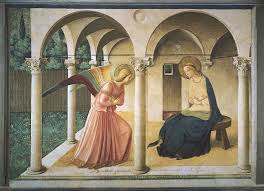Stamp: Pre-Romanesque fresco from the church of Sant Cerni de Nagol (Andorra, French Administration 1985)
Pre-Romanesque fresco from the church of Sant Cerni de Nagol (Andorra, French Administration 1985)
01 January (Andorra, French Administration ) within release Religious art goes into circulation Stamp Pre-Romanesque fresco from the church of Sant Cerni de Nagol face value 5 French franc
| Stamp Pre-Romanesque fresco from the church of Sant Cerni de Nagol in catalogues | |
|---|---|
| Yvert et Tellier: | Yt:AD-FR 344 |
| Michel: | Mi:AD-FR 365 |
Stamp is square format.
Stamp Pre-Romanesque fresco from the church of Sant Cerni de Nagol it reflects the thematic directions:
Goliath (/ɡəˈlaɪəθ/ gə-LY-əth) was a Philistine giant in the Book of Samuel. Descriptions of Goliath's immense stature vary among biblical sources, with texts describing him as either 6 ft 9 in (2.06 m) or 9 ft 9 in (2.97 m) tall. According to the text, Goliath issued a challenge to the Israelites, daring them to send forth a champion to engage him in single combat; he was ultimately defeated by the young shepherd David, employing a sling and stone as a weapon. The narrative signified King Saul's unfitness to rule, as Saul himself should have fought for the Kingdom of Israel
Fresco (pl. frescos or frescoes) is a technique of mural painting executed upon freshly laid ("wet") lime plaster. Water is used as the vehicle for the dry-powder pigment to merge with the plaster, and with the setting of the plaster, the painting becomes an integral part of the wall. The word fresco (Italian: affresco) is derived from the Italian adjective fresco meaning "fresh", and may thus be contrasted with fresco-secco or secco mural painting techniques, which are applied to dried plaster, to supplement painting in fresco. The fresco technique has been employed since antiquity and is closely associated with Italian Renaissance painting.


